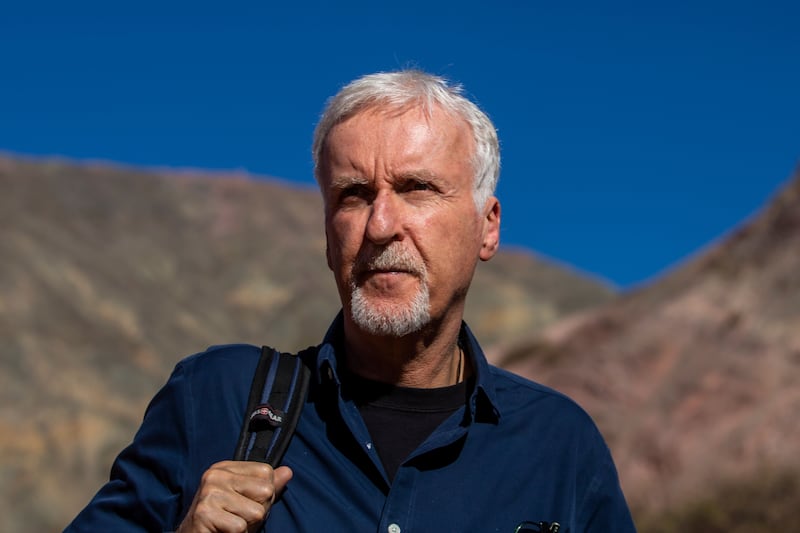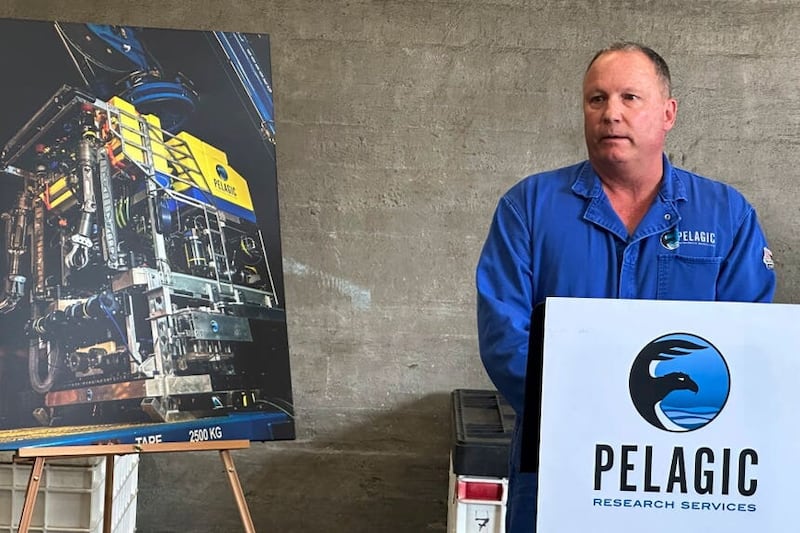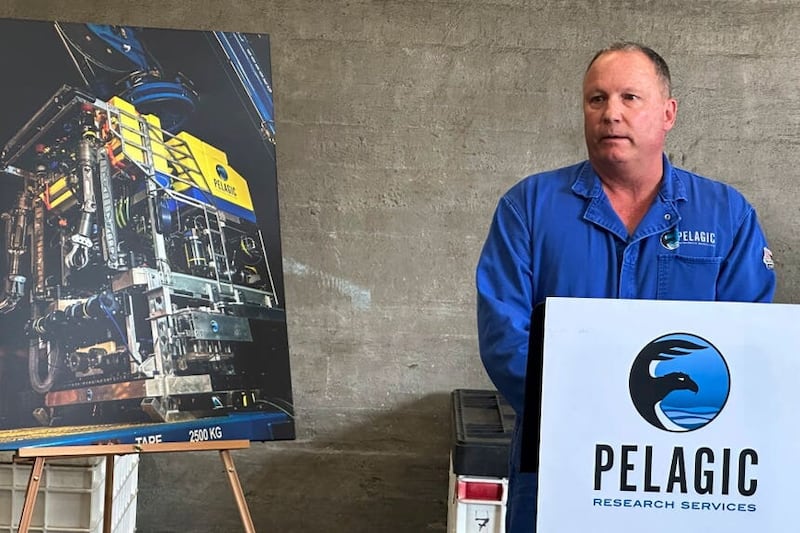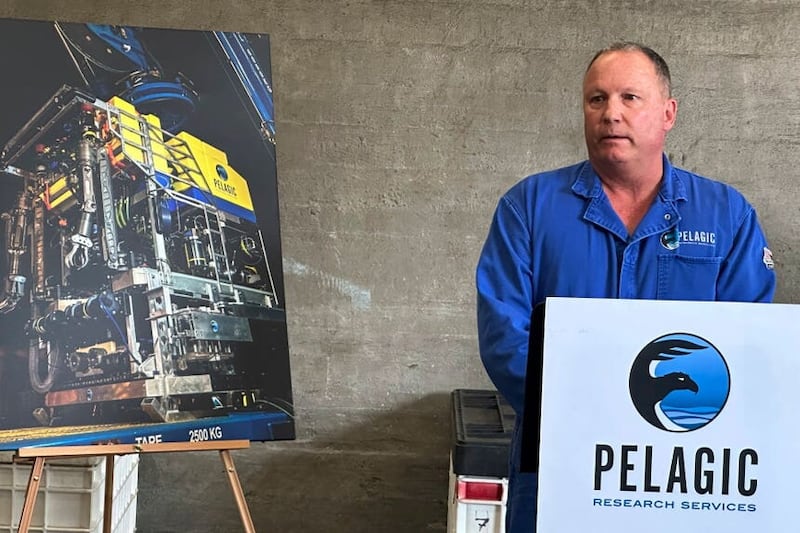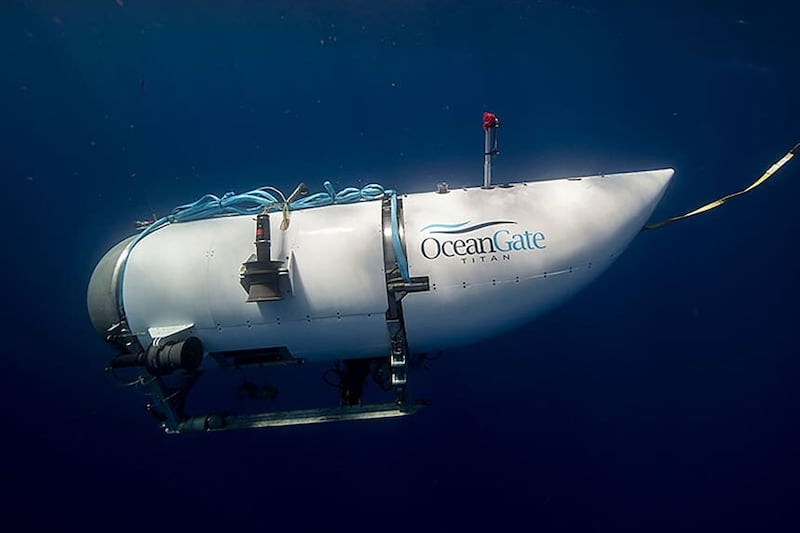The family of missing British billionaire Hamish Harding have said they have “great faith and trust” in rescue teams, as the US Coast Guard expands its search for the submersible tourist vessel he is on into deeper waters.
There may be as little as 54 hours of emergency oxygen left aboard the submersible, named Titan, which lost communication with tour operators on Sunday while about 435 miles south of St John’s, Newfoundland, during a voyage to the Titanic shipwreck off the coast of Canada.
Rescuers are in a race against time to find Mr Harding and four other passengers on board the 6.7 metres (22ft) long OceanGate Expeditions vessel.
They are UK-based businessman Shahzada Dawood and his son Suleman, reportedly together with French submersible pilot Paul-Henry Nargeolet and chief executive and founder of OceanGate Expeditions Stockton Rush.
The statement from private plane firm Action Aviation, of which Mr Harding is chairman, said: “Both the Harding family and the team at Action Aviation are very grateful for all the kind messages of concern and support from our friends and colleagues.
“We are thankful for the continued efforts of the authorities and companies that have stepped in to aid in the rescue efforts. We put great faith and trust in their expertise.”
#Update A Canadian Aircraft P3 Aurora has arrived on scene to conduct sonar searches.
The R/V Polar Prince and R/V Deep Energy are continuing their surface searches.
Total search area completed as of this morning is 10,000 SQ miles.#Titanic
— USCGNortheast (@USCGNortheast) June 20, 2023
Sky News reported that Coast Guard Rear Admiral John Mauger told CNN: “As we continue on with this search … we’ve been working through the night with a broad group of partners to bring all capabilities to bear looking on both the surface and now expanding to a subsurface in the area.”
The US Coast Guard, leading search efforts, tweeted that the total search area completed so far is 10,000 square miles.
It added that a Canadian Aircraft P3 Aurora has arrived on the scene to conduct sonar searches while research vessels Polar Prince and Deep Energy continue their surface searches.
Mr Mauger estimated there was 70 to 96 hours left to find them at a press conference held just before 5pm Boston time (10pm BST) on Monday.

The search and rescue operation involves military aircraft 900 miles east of Cape Cod.
The US Coast Guard said previously the Canadian research vessel Polar Prince and 106 Rescue wing will conduct surface searches alongside two US C-130 flights.
Oceanologist Dr Simon Boxall, of the University of Southampton, said a distress signal from the submersible was sent out.
He told the PA news agency: “This is second-hand knowledge but my understanding is that they have received a signal from the submarine.

“You can’t use radios underwater. You rely totally on ‘pings’. What they have is really limited communication.
“Apparently they have had, and I don’t know when… they have had an emergency ping saying the vessel is in distress. I don’t know if that is automatically generated or generated by people on board,” he said, adding he did not know when the message was transmitted.
Dr Boxall said rescuers would have to first locate the submarine, which is not a “trivial ask”, as it could be as much as 4km (2.5 miles) deep, while the boat is beyond the reach of helicopters.
Very few vessels can reach the sort of depths that may be needed to carry out a successful rescue mission, he told GB News.
The Polar Prince and @Rescue106 will continue to do surface searches throughout the evening.
Two C-130 flights have been completed from @USCG CG Air Station Elizabeth City.@hfxjrcc Surface/subsurface search by Canadian P8 Poseidon aircraft to continue in the morning.
— USCGNortheast (@USCGNortheast) June 20, 2023
The Titan vessel weighs 10,432kg (23,000lbs) and is capable of diving to depths of 4,000m (13,120ft) “with a comfortable safety margin”, according to operator OceanGate.
In a May 2021 court filing, OceanGate said the Titan had an “unparalleled safety feature” that assesses the integrity of the hull throughout every dive.
At the time of the filing, Titan had undergone more than 50 test dives, including to the equivalent depth of the Titanic, in deep waters off the Bahamas and in a pressure chamber, the company said.
During its 2022 expedition, OceanGate reported that the submersible had a battery issue on its first dive and had to be manually attached to its lifting platform, according to a November court filing.
CBS journalist David Pogue, who went on the trip last year, said the liability waiver included stark safety warnings.
The submersible was taking part in OceanGate’s third annual voyage to monitor the decay of the ship’s wreckage, following expeditions in 2021 and 2022.
The cost of the 2023 expedition is 250,000 dollars (£195,957) per person, as stated on the OceanGate’s website.



